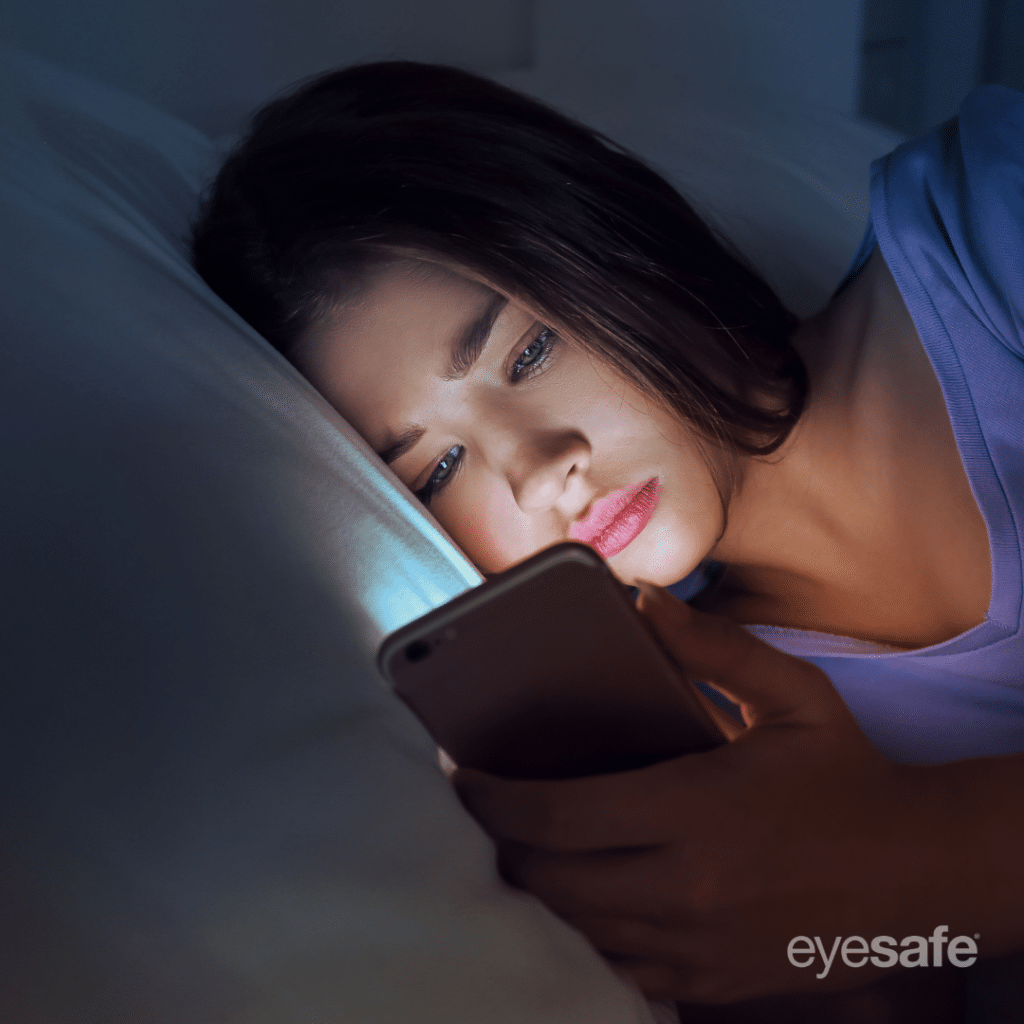After a long day, many of us unwind by scrolling through our phones, watching TV, or browsing social media. This habit has become so ingrained in our evening routine that we don’t think twice about it. In fact, according to WebMD, nearly 90% of Americans admit to using electronic devices shortly before bed, and many use their phone while in bed. While this screen time might seem harmless, the blue light from our device screens can have a significant impact on our sleep by interfering with our body’s natural sleep-wake cycle. Understanding how blue light affects your sleep is crucial for creating healthier bedtime routines and ensuring you get the rest you need.
Understanding Blue Light and Its Impact on Sleep
Our exposure to blue light has become nearly unavoidable, especially with the widespread use of electronic devices. While blue light plays a crucial role in keeping us alert during the day, it can have negative effects on our sleep if we’re not careful about reducing exposure in the evening.
What Exactly is Blue Light?
Blue light is a high-energy visible light found in the light spectrum that is naturally emitted by the sun. This type of light is essential for regulating our sleep-wake cycles, mood and overall alertness. However, with the increase of artificial lighting and digital screens, our exposure to blue light has significantly increased, particularly during the evening hours when our bodies should be winding down for sleep.
The Effect of Blue Light on Circadian Rhythms
Our bodies operate on a 24-hour cycle known as the circadian rhythm, which governs essential functions such as sleep. Exposure to blue light, especially at night, can disrupt this natural cycle because it suppresses melatonin production—a hormone that makes us feel sleepy. When we use smartphones, tablets or watch TV before bed, the blue light from these devices can trick our brain into thinking it’s still daytime, delaying the onset of sleep and potentially contributing to reduced next-day alertness, poor mood and trouble concentrating.
Common Sources of Blue Light
In addition to sunlight, several artificial sources contribute to our daily blue light exposure. These include:
- Smartphones
- Computers and Monitors
- Tablets
- Televisions
- Video Game Consoles
- LED and Fluorescent Lights
Understanding these sources can help you make informed decisions about when and how to use these devices, particularly in the hours leading up to bedtime.
Mitigating the Impact of Blue Light on Sleep
Fortunately, there are several strategies you can adopt to minimize blue light exposure in the evening:
- Turn Off Electronics: Try to reduce your use of electronic devices in the evening. Consider turning off your device at least two hours before bed to help your body produce melatonin naturally.
- Use Blue Light Screen Protectors: Products like Eyesafe® Blue Light Screen Protectors can be added to your device to minimize blue light exposure, all while preserving the true colors of your display—unlike software solutions like night shift, which often create an amber tint.
- Improve Your Sleep Environment: If complete avoidance of blue light is challenging, consider using blackout curtains or sleep masks to create a dark environment for better rest.
The Importance of Managing Blue Light Exposure
Finding the right balance between blue light during the day—important for mood, alertness, and regulating sleep-wake cycles—and limiting it at night is crucial for a good night’s sleep. By being mindful of when and how much blue light you’re exposed to, you can support your body’s natural melatonin production, ensuring you get the quality sleep you need to perform at your best.
You can shop blue light-filtering screen protectors at shop.eyesafe.com.
Sources:
1 Mark Rosenfield, PhD, Review of Optometry, “Living with Blue Light Exposure”
2 Chang AM, et al. Evening use of light-emitting eReaders negatively affects sleep, circadian timing, and next-morning alertness. Proceedings of the National Academy of Sciences of the United States (PNAS). January 2015. 112(4): 1232-1237.
This article does not provide medical advice, and its products are not intended to diagnose, treat, cure or prevent any disease or medical condition. Please consult your physician or other qualified health care provider with any questions you may have about your health. Visit eyesafe.com/disclaimer for more information.
